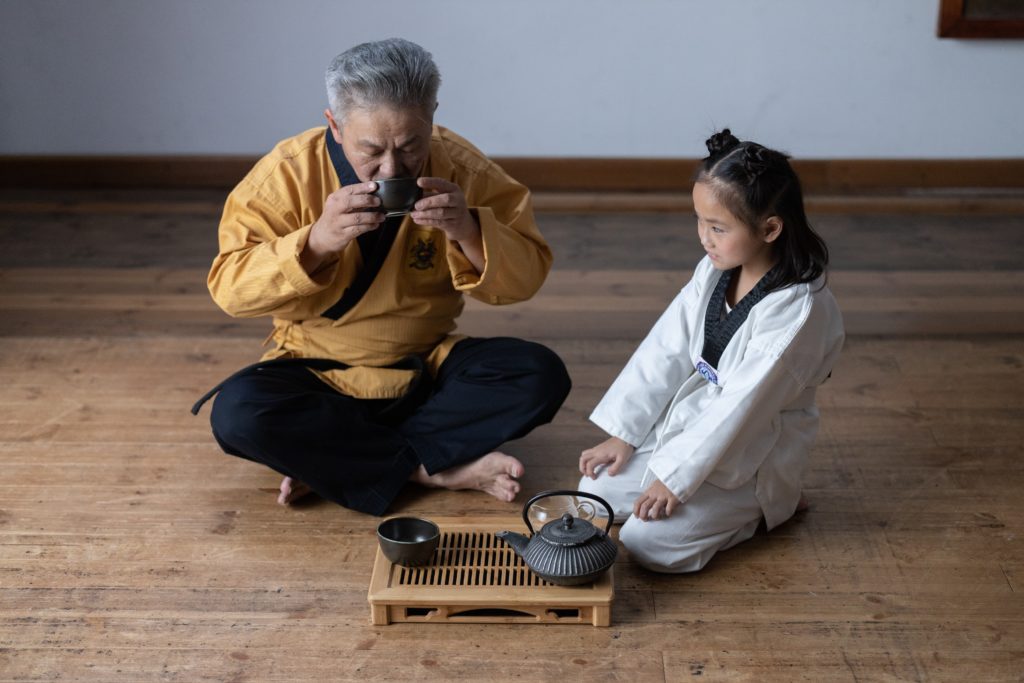
Photo by cottonbro from Pexels
Do you know what the most consumed liquid in the world is after water? And hint: It’s not beer! Tea is made from the leaves of Camellia sinensis and is the second most consumed drink on the planet. So, in honor of National Hot Tea Month, we are exploring five global regions where tea is a fundamental part of culture. We’ll also dive into just how tea gained its popularity in our modern world!
Here are five global regions where tea is one of the most popular drinks:
- Japan: The Japanese tend to prefer green tea over other types such as black tea; consuming it daily is an important cultural custom. Various green tea styles include:
- Ryokucha: A mix of leaves collected in three different stages of the green tea harvesting rounds.
- Matcha: highest quality green tea leaves are collected, dried, milled, and a powder created to mix with heated water
- Konacha: The least expensive form of Japanese tea, using the dust or residue of the tea plant harvest.
- Hojicha: A specialty green tea that is made by steaming and then roasting the leaves, giving it a distinctive caramel aroma.
- India: Tea is beloved in this country and Indians themselves consume almost 70% of the tea produced in India. Specifically, black teas such as Assam and Darjeeling are favorites. Masala chai which is well known for its spicy flavors of cinnamon, ginger, black pepper, cloves, and cardamom is popular. In India, chai is such a best-seller that chai wallah tea shops are in nearly every neighborhood offering gathering spots for steaming chai in clay cups, socialization, and the daily news.
- China: Many believe tea originated in China for natural medicinal purposes. Oolong is strongly associated with many religions practiced in China including Oolong is closely aligned with the many spiritual and philosophical beliefs practiced in China, including Buddhism, Confucianism, and Taoism. Many Monks consume tea as an aid in seeking calm and peacefulness. Gradually, the practice of drinking tea became not just a spiritual activity but also a cultural and social one.
- Britain: According to history, tea first arrived in Europe in the 16th century but didn’t become popular on a wide scale in Britain until the 19th century. As an aid to the slump between lunch and dinner, many working-class Brits sought a light meal between lunch and dinner with quality black tea and a dash of milk, with finger food like sandwiches, scones, or small pastries. Before, drinking tea was more of a high-class activity. Gradually, British society adopted this practice, and it has become a popular custom. Pro-tip: There is a misconception that it’s posh or elegant to lift your pinky when holding the teacup. It’s an act of poor taste and viewed as elitist or snobbish.
- Morocco: In the Arab world, drinking tea is a signal of warmth and hospitality and an invitation to commune with others over many conversations and cups of tea. Moroccans especially love their tea traditions through their special version: Moroccan mint tea. Gunpowder green tea is brewed with fresh mint leaves in an ornate metal tea pot along with generous amounts of sugar, then poured steaming hot into glass teacups. The entire process is accomplished with flourish and care. Too sweet for you? Simply say laa sukar (no sugar), shukran (thank you).
Numerous cultures enjoy daily tea. Quality hot green or black tea is a healthy complement to life. Since our tea options are unlimited today, consider shopping online or visiting your local tea house to sample a new tea flavor. It’s also soothing to enjoy a cup of your favorite tea in honor of National Hot Tea Month.
Sharon Schweitzer, J.D., is a cross-cultural trainer, diversity and inclusion consultant, modern manners expert, and the founder of Access to Culture. In addition to her accreditation in intercultural management from the Hofstede Centre, she is an attorney and mediator. Sharon serves as a Chinese Ceremonial Dining Etiquette Specialist in the documentary series Confucius was a Foodie, on Nat Geo People. Her Amazon #1 Best Selling book in International Business, Access to Asia: Your Multicultural Business Guide, received a coveted Kirkus Star and was named to Kirkus Reviews’ Best Books. She’s a winner of numerous awards, including the British Airways Intn’l Trade Award at the Greater Austin Business Awards.
#SharonSchweitzer, #AccesstoCulture, #Access2Culture, #AccesstoAsia, #CulturalIntelligence, #Cross-CulturalTrainer, #InterculturalCommunication, #GlobalLeadership, #Interculturalist, #Etiquette, #CultureExpert, #Speaker, #KeynoteSpeaker, #NationalMonthCelebration, #JanuaryCelebration, #GlobalTraditions

Tea drinking probably started during the Shang administration… it started as a restorative beverage as well as a beverage consumed by Buddhist priests” – But Buddhism didn’t arrive at China until over 1000 years after Shang tradition.
Thank you for your comment. I believe we are both correct. Tea drinking probably did start during the Shang administration or dynasty which ruled from 1600 to 1046 BC.
Buddhism is believed to have arrived in China in 150 CE when Buddhist priests, monks and other spiritual figures consumed tea as a restorative beverage for years.